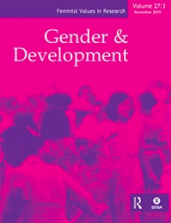‘Thinna’ as a Quasi-Public Space: The case of leather homeworkers in Southern India

Overview
Homeworkers form a significant part of the informal economy in the global South, are over-represented by women, and are defined by their place of work, that is, their ‘home’. As production and social reproduction intersect in the private sphere of the home, a woman’s mobility and access to public spaces is limited and gendered. Within this reality, in the narrow streets of the small town of Ambur in Southern India, women homeworkers stitching leather footwear access ‘public’ entities through their ‘thinna’: a porch/veranda-like structure at the entrance of the house. This article explores thinna as a quasi-public space, arguing that even while spatially attached to a private home, it allows women to place themselves and to participate in the realm of the public. Based on in-depth interviews with 62 homeworkers, I show that women homeworkers utilise the thinna to make themselves ‘visible’ – physically, socially, economically, and politically. They sit here not only for better lighting but also to chat with neighbouring homeworking women, thereby keeping themselves informed on what other women are stitching and their piece rates. They engage economically with the contractor(s), using it to showcase their stitching skills. Here, a local civil society organisation convenes meetings to organise them and here leather company representatives ‘visit’ homeworkers. For homeworkers, thus, thinna provides a public and social space where the professional and personal imbricate.
Additional details
Author(s)
Publisher(s)
Editor(s)
DOI
https://doi.org/10.1080/13552074.2024.2348395ISBN
1355-2074How to cite this resource
Citation styles vary so we recommend you check what is appropriate for your context. You may choose to cite Oxfam resources as follows:
Author(s)/Editor(s). (Year of publication). Title and sub-title. Place of publication: name of publisher. DOI (where available). URL
Our FAQs page has some examples of this approach.
